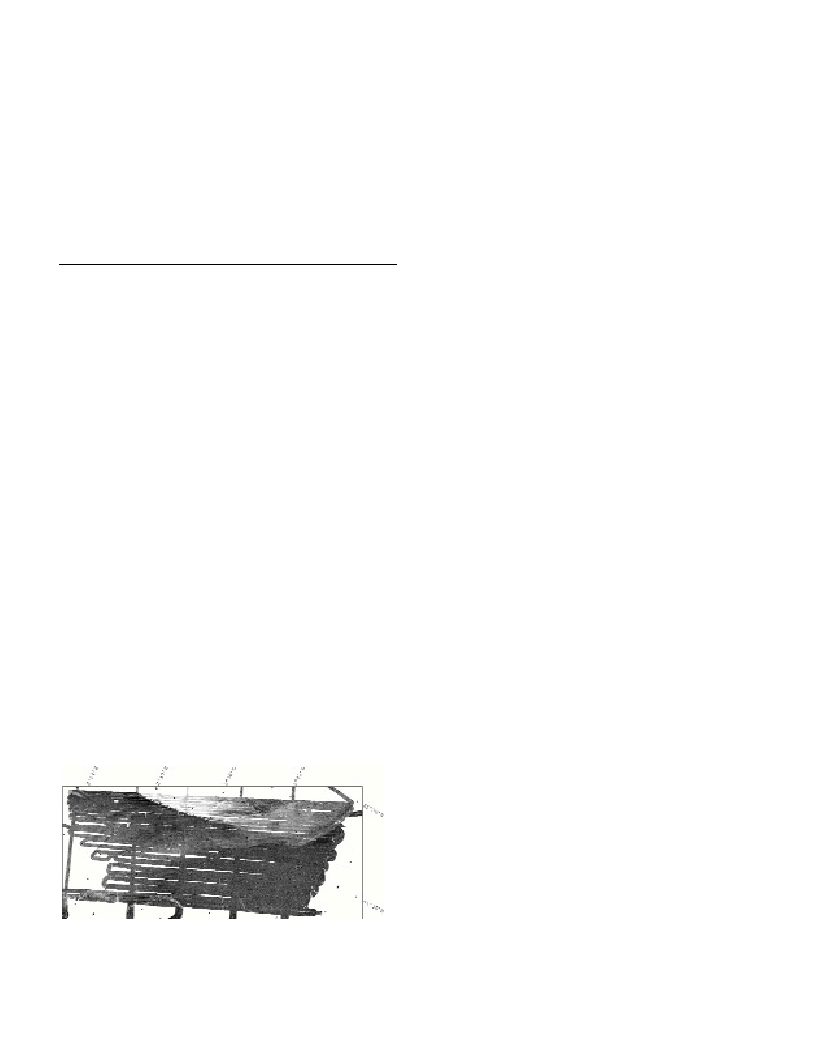MORPHOLOGIC FEATURES OF THE MARESME CONTINENTAL SHELF (NE BARCELONA)
AND THEIR CAUSAL SEDIMENTARY PROCESSES
C. Liquete
1*
, R. Urgeles
1
, M. Canals
1
, J.H. Clarke
2
1
GRC Geociències Marines, Dept. Estratigrafia, Paleontologia i Geociències Marines, Fac. Geologia, Univ. de Barcelona,
Spain - * cliquete@geo.ub.es
2
Ocean Mapping Group, Univ. of New Brunswick, Fredericton, New Brunswick, Canada
Abstract
The sea?oor bathymetry, backscatter and upper sediment cover of the Maresme continental shelf (NE Barcelona) were analized by means
of multibeam mapping and very high resolution seismic re?ection profiling. Two large morphological steps identified as part of relict
coastal sand bodies as well as some longitudinal beachrock bars have been linked to successive sea level rise pulses. Numerous bedforms
with NNE-SSW orientation are related to present long-term and/or stormy currents. In conclusion, the overall morphology and sediment
distribution in the study area results from ?uvial sediment input and relative sea level variations during the Late Quaternary.
Keywords: Maresme continental shelf, high-resolution morphology.
Rapp. Comm. int. Mer Médit., 37,2004
45
Full coverage Simrad EM1002 data and very high-resolution
Simrad TOPAS parametric profiles were collected from the Maresme
continental middle and outer shelf (NE Barcelona), between the
Blanes, Arenys and Mataró canyons, covering an area of around
28
×
16 km (2º20’-2º50’E, 41º15’-41º40’N). The EM1002 data were
used to construct detailed bathymetric and shaded relief maps,
backscatter mosaics and combined products of the Maresme
continental shelf that, together with the TOPAS profiles, depict the
major morphosedimentary elements occurring in the area.
The Maresme coast is mostly wave-dominated and the sea?oor is
primarily sandy. Prevailing oceanographic currents (mainly the
Liguro-Provençal current) and littoral drift ?ow southwestwards.
Typical mesoscale anticyclonic structures migrating from the Gulf of
Lions are often present in the study area (1), as well as other ones
related to the local submarine physiography (2). Winter storms caused
by strong eastern winds create downwelling bottom currents that can
transport large volumes of sediment downshelf and offshore (3).
Inspection of the TOPAS profiles shows that the upper sediment
cover (most probably Late Quaternary) ranges from 3 to 10 m thick
on the westernmost part of the study area to more than 40 m on the
easternmost part. The dominant sedimentation pattern is aggrada-
tional. Seawards, the sediment cover is more scarce and the terrain
more rugged, as can also be observed in the EM1002 data.
The most conspicuous morphological features of the study area are
two large steps around 20 m high subparallel to the coastline (Fig. 1).
The shallowest one deepens eastward from 40 to 70 m depth evolving
to a more subdued relief, while the deepest one ranges from 100 to
120 m depth and shows a gentler slope. These two steps were
interpreted as relict sand bodies built up during the Versilian
transgression in a shoreface environment (3). Indeed, they seem to be
related to different sea level stages showing, at least the deepest one,
a progradational internal structure. The relative coarse nature of their
sediments appears to be confirmed by a relatively high backscatter
compared to surrounding areas (Fig. 1). The upper truncation of these
bodies indicates that they have been later reworked.
Fig. 1. Backscatter mosaics show a clear difference in re?ectivity values
above and below the two morphological steps. The largest beachrock
bars, showing relative high backscatter (light tones), can be noticed in
the upper left part of the picture. Mataró and Arenys canyon heads start
at the bottom left corner of the map.
Different groups of longitudinal bedforms (probably dune fields)
appear over most of the study area. The structures show different size
and textural properties but all them maintain a NNE-SSW orientation.
Their origin is probably related to long-term and/or stormy currents
which undergo refraction processes and propagate from deeper to
shallower areas.
Below the steps, two large crescent shaped bars appear. They
become asymptotically parallel to the coast and are probably made up
by partially cemented deposits. Their orientation turns from N-S to
NE-SW being finally buried by the sediments forming the steps. Their
morphology appears similar to that of other minor bodies parallel and
closer to the shoreline that have been identified as beachrocks (4).
Therefore, these structures can be also linked to successive sea-level
rise pulses.
At the northwestern end of the steps, near the Blanes Canyon, the
sea-?oor becomes very steep, whilst sediment thickness increases
suddenly. This appears to be related (a) to a deceleration and
consequent lost of competence of the coastal southwestward current
previously constrained by the Blanes Canyon head, (b) to the
in?uence of the Tordera River input and/or (c) to a continuous
sediment capture towards the aforementioned depressed area and,
ultimately, to the Blanes Canyon (2,3).
In conclusion, the Maresme shelf shows a morphological signature
that is largely the result of sediment input from the continent and
reworking of these sediments during emersion and transgression
periods and, more recently, by bottom currents. The shelf morphology
and sediment cover show the result of the interplay between these
processes during the Late Quaternary.
References
1-Arnau P.A., 2000. Aspectos de la variabilidad de mesoescala de la
circulación marina en la plataforma continental catalana. Universidad
Politécnica de Cataluña, PhD Thesis, 426 p.
2-Granata T.C., Vidondo B., Duarte C.M., Satta M.P. and Garcia M.,
1999. Hydrodynamics and particle transport associated with a submarine
canyon off Blanes (Spain), NW Mediterranean Sea. Cont. Shelf Res., 19:
1249-1263.
3-Diaz J.I. and Maldonado A., 1990. Transgressive sand bodies on the
Maresme continental shelf, Western Mediterranean Sea. Mar. Geol., 91:
53-72.
4-Serra J., 2002. Els condicionants geomorfològics de les praderies de
Posidòniadel Maresme. L’Atzavara, 10: 7-10.

